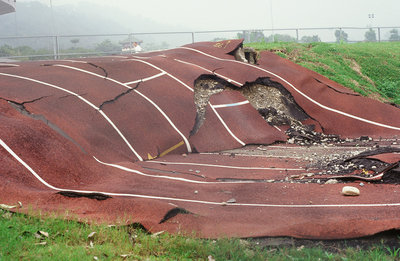
The lingering aftershocks of a recent New Yorker story, which pronounced everything west of I-5 “toast” when a massive Cascadia subduction zone earthquake hits the Northwest, means a lot of attention has been paid to quakes recently. An Aug. 6 UO public forum on the science behind “the really big one” drew more than 500 people, with 200 more watching on live stream. But how ready is the UO itself for a quake?
The UO has been upgrading or planning seismic upgrades for several academic buildings on campus, such as Straub Hall ($22 million) Fenton Hall ($5.5 million) and Chapman Hall ($10.5 million) all funded through government bonds, grants and gifts.
When it comes to paying for immediate emergency response on campus after an incident, Kelly McIver of the UO police says that the university operates like other government agencies or tax-exempt entities like a church.
As a public, taxpayer-funded entity, the UO doesn’t pay a per-incident charge for public services like fire response. The same system is true for other government agencies, McIver says, like public schools or the federal courthouse.
Still other tax-exempt entities, such as EWEB, make “contributions in lieu of tax” to local governments to fund things like fire protection.
Christopher Ramey, associate vice president for campus planning, design and construction says that the UO will “continue to seek funding for projects that need retrofits.” He adds, “Generally speaking, the buildings we are most interested in are the ones that include unreinforced masonry construction, such as Villard and Deady.”
According to the Federal Emergency Management Agency (FEMA), generally, “unreinforced masonry walls do not have a grid of steel reinforcing bars embedded within them” and are the “most seismically vulnerable category of construction in a community,” with earthquake damage ranging from bricks falling on pedestrians to complete building collapse.
Ramey says, “Seismic retrofits are designed and constructed to meet current building codes. These codes are intended to allow the escape of the occupants in the event of seismic activity.”
A 1993 Oregon Daily Emerald article, written in response to damaging earthquakes in Klamath Falls, said UO’s University Housing was generally ahead of the rest of the state when it came to earthquake safety. Ramey says that still holds true.
Krista Dillon, assistant director at UO’s Emergency Management & Continuity office, tells EW that in addition to doing outreach on “drop, cover and hold on (hold on to the table or furniture you are hiding beneath),” the UO has developed an incident management team of about 30 people across campus. That group has had “tabletop exercises” to talk through immediate response steps. There are designated meeting areas on campus, generally in large, public open spaces for groups to gather in the case of a quake, she says.
Dillon says the campus is also looking at conducting a full-campus evacuation drill.
In addition to the 700 people who came to the “really big one” earthquake presentation, Dillon says a couple hundred people came to follow-up presentations, showing a high degree of interest on campus.
She says the campus is encouraging faculty and staff to have a disaster plan for their homes — a one- to two-week emergency kit, rather than the traditional three-day kit. She says the UO has purchased a water filtration system to get a higher volume of water to campus after a quake.
The UO also encourages students to have their own kits. “We will have dry cereal,” she says. Parents can purchase backpack emergency kits for their kids during the UO’s week of welcome. Dillon says, “It comes back to that personal preparedness.”
For more info on UO earthquake preparedness, go to earthquake.uoregon.edu.